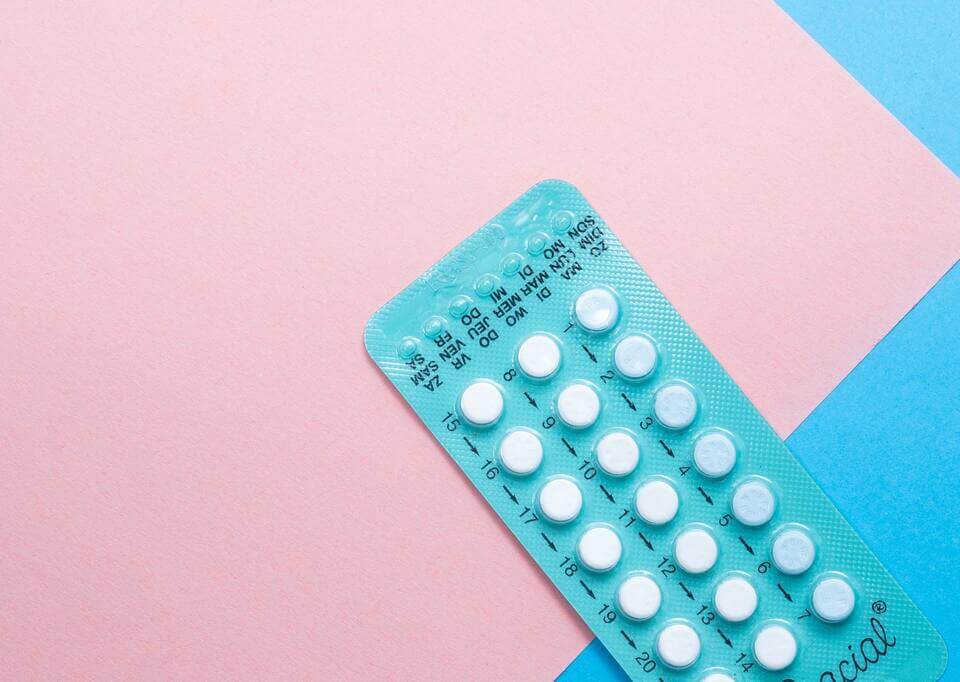- About 8 percent of pre-menopausal women in the United States develop ovarian cysts requiring medical treatment.
- Many factors can influence the development of ovarian cysts, but the most common are the result of shifting hormones during the menstrual cycle.
- If you experience heavy bleeding, severe pelvic pain, nausea, vomiting, or dizziness related to an ovarian cyst, seek medical attention immediately.
If you’re experiencing abdominal pain, painful bowel movements, or irregular periods, you might have an ovarian cyst. Worldwide, about 7 percent of women develop an ovarian cyst during their lifetime, although most cysts don’t cause symptoms and many women don’t even know they have them. (1)
If you’re living with painful ovarian cysts, there are ways you can prevent their development or reduce the symptoms caused by them from home. Keep reading to learn how to prevent and manage ovarian cyst pain as well as when to seek medical treatment for ovarian cysts.
What Are Ovarian Cysts?
Ovarian cysts are fluid-filled sacs that form in the ovary. (2) Ovarian cysts usually affect women who are still in their childbearing age (premenopausal women), but they can impact postmenopausal women as well.
Ovarian cysts are quite common and don’t generally cause any health issues. Cysts become problematic when they continue to grow and rupture or cut off blood supply to your ovary, a phenomenon called ovarian torsion. In some severe cases, ovarian cysts must be removed surgically.
Ovarian cysts don’t necessarily signify an issue with your ovarian health, but they can signify a more serious health condition like polycystic ovary syndrome (PCOS). If you are experiencing severe pain, it’s important to see a health care provider to get an evaluation for ovarian cysts.
While only 7 percent of women worldwide experience ovarian cysts, about 8 percent of pre-menopausal women in the United States develop ovarian cysts requiring medical treatment. (3) For women concerned that ovarian cysts may lead to cancer, they can breathe easy knowing the number of women with ovarian cysts is much greater than the incidence of ovarian cancer in the U.S., which is classified as a rare disease impacting 1.4 percent of women. (4)
Types of Ovarian Cysts
Most cysts are considered “functional,” which means they are benign cysts that cause no symptoms. Functional cysts are a byproduct of the menstrual cycle. Functional cysts develop due to irregular follicle maturation in the ovary. The follicle is the area of the ovary in which eggs are housed.
In a healthy ovary, the follicle grows and ruptures each month, releasing an egg during ovulation. The follicle then becomes a corpus luteum. An irregularity in either of these processes can cause cyst development. The two common types of functional ovarian cysts are follicular cysts and corpus luteum cysts.
- Follicular cysts develop when the follicle fails to release its egg. Instead of rupturing, the follicle grows, causing a cyst. Follicular cysts do not show any symptoms and are usually cured without any medication in 1 to 3 months.
- Corpus luteum cysts develop when the corpus luteum seals and accumulates fluid instead of shrinking naturally.
Functional cysts require no medical treatment and usually go away by themselves in 6–8 weeks. (5) However, if they do not naturally shrink, they may continue to grow until cyst size reaches up to 4 inches, causing ovarian cyst pain. In this case, medical care may be required to shrink or remove the cyst.
There is another type of cyst which is unrelated to the menstrual cycle—pathological cysts. This other category of cysts includes:
- Dermoid cysts—These are cysts on the ovary containing hair, fat, and other tissues. These cysts may be present from birth but they tend to grow during the reproductive years.
- Cystadenoma cysts—This type of cyst usually forms on the outer side of an ovary.
- Endometrioma cysts—These cysts are also called “chocolate cysts” because they are dark brown in color. These are cysts filled with menstrual blood that form when the tissues that normally grow inside your uterus start growing on the outer side and become attached to your ovary. Endometrioma cysts are a sign of endometriosis.
Signs and Symptoms of Ovarian Cysts
Most people who have ovarian cysts don’t experience any symptoms. However, if a cyst ruptures or grows uncontrollably, it can cause uncomfortable ovarian cyst symptoms, including:
- Pelvic pain and pressure
- Pain during sex
- Painful, irregular periods
- Heavy bleeding during the menstrual cycle
- Abdominal swelling
- A change in body weight
- Muscle aches in the low back or thighs
- Unusual vaginal bleeding
- Breast tenderness
- Nausea and vomiting
A ruptured cyst or ovarian torsion will cause the most severe symptoms, like nausea, vomiting, dizziness, or severe pelvic pain. In these cases, it’s important to seek medical attention immediately so a health care provider can evaluate whether your ovarian cyst requires surgical treatment.
What Causes Ovarian Cysts?
Many factors can influence the development of ovarian cysts, but the most common are the result of shifting hormones during the menstrual cycle.
Hormonal Problems
Hormonal balance is necessary for a healthy menstrual cycle. If you experience a hormonal overload or imbalance due to irregular periods, fertility drugs, or birth control bills, cysts can form.
Pregnancy
Many people develop ovarian cysts during the early months of pregnancy. In fact, cysts can support pregnancy until the placenta (a temporary organ that forms during pregnancy and provides the fetus with nutrients) forms. But if cysts remain or continue to grow, they may need to be removed by your health care provider.
Endometriosis
Endometriosis is a painful disorder in which the tissues that normally grow inside the uterus start growing outside it. (6) About 10 percent of women have endometriosis and suffer from uncomfortable side effects including pain during sexual intercourse, painful periods, and infertility. (7) Endometriosis also makes women more susceptible to endometrial cysts, since the tissues growing outside the uterus can attach to the ovary and form a growth.
Severe Pelvic Infections
Infections in the pelvic region can initiate the formation of ovarian cysts as well. If infections spread to the ovaries or fallopian tubes, they can lead to cystic growths.
Medications
Some medications that influence the body’s natural hormone production, like fertility drugs or oral contraceptives, can cause ovarian cysts.

Ovarian Cysts and PCOS
PCOS, or polycystic ovary syndrome, is a condition in which the ovaries release excessive amounts of male steroid hormones, called androgens, influencing reproductive health. (8) Many people who have PCOS develop many small ovarian cysts, but ovarian cysts do not cause PCOS.
PCOS is still being studied, but a few things may increase the chances of it developing, including weight gain, insulin resistance, and prolonged inflammation. The symptoms of PCOS include:
- Irregular periods
- Infertility
- Ovarian cysts
- Acne
- Abnormal hair growth
About 15 percent of women have PCOS, so if you’re struggling with persistent ovarian cysts, it’s a good idea to discuss testing for PCOS with your health care provider. (9)
Can Ovarian Cysts Lead to Cancer?
Ovarian cysts can lead to cancer, but the risk of cancer developing from a cyst is extremely low, especially in premenopausal women. (10) For women of childbearing age, the risk is 1 in 1,000; for postmenopausal women, the risk is 3 in 1,000.
Natural Remedies for Ovarian Cysts
Natural treatment options for ovarian cysts aim to balance hormones to reduce the prevalence and severity of cyst occurrence. These natural solutions help the body clear out excess estrogen and promote hormonal balance, which shrinks and eliminates those cysts.
Here are some alternative treatment options to try if you’re dealing with ovarian cysts:
Opt for Foods That Promote Hormonal Balance
What you eat influences your body’s natural balance of hormones. To keep your hormonal health in shape, choose a hormone-balancing diet.
- Consume a diet rich in cruciferous vegetables like cabbage, cauliflower, brussels sprouts, and broccoli.
- Eat fruits rich in vitamin C like oranges, grapefruit, berries, and lemons as these can also help eliminate the cysts.
- Choose organic meat and dairy over inorganic sources—inorganic sources contain estrogen, and estrogen overload can cause cysts.
- Add fermented foods like cider, yogurt, cultured milk and kimchi to your diet.
- Try to eat more fiber—fiber-rich foods can help your liver to eliminate excess estrogen from your body.

Avoid Foods That Increase Your Natural Estrogen Levels
Just like eating some foods can help, eating others can make you more likely to develop cysts. Some foods increase your body’s natural estrogen levels, which can make you more likely to develop painful cysts. In general, avoid:
- Foods containing soy.
- Foods rich in carbohydrates and fats. These foods are the main culprit in altering your hormonal balance.
- Pears and flax seeds; these foods can lead to estrogen dominance.
- Beverages like alcohol and coffee.
- Sugar-rich foods and beverages.
Try Supplements and Herbal Therapies
Some supplements and herbs can also help your body naturally rebalance hormones. If you’re looking to add supplements to your diet to support your reproductive health, try:
- Diindolylmethane (DIM)—DIM is a naturally occurring compound found in some vegetables including broccoli, cauliflower, and cabbage. Some studies have shown the effectiveness of DIM supplements in reducing estrogen dominance. (11)
- Maca—Maca is a natural herb that nourishes the endocrine system. Maca has been proven to regulate the menstrual cycle and can help rebalance hormones. (12)
- Milk thistle—Milk thistle seeds help revitalize the liver, and the liver plays an important role in eliminating excess estrogen out of your body more effectively.
- Vitex agnus-castus (Vitex)—Vitex is a Mediterranean plant supplement obtained from chaste berry that has been shown to improve PMS symptoms. (13) Vitex works by improving the timing of your menstrual cycle, improving your hormonal balance and decreasing estrogen overload.
- Ginger tea—Ginger has antioxidant and anti-carcinogenic properties and has been shown to have anti-cancer effects with some gastrointestinal cancers and support PCOS patients. If you’re concerned about ovarian cysts developing into cancer, drinking ginger tea can’t hurt.
- Probiotics—Probiotics help your body maintain healthy levels of good bacteria, which support your body’s fight against infections and other health complications caused by bacterial imbalance. High levels of good bacteria can fight infections that may result from ovarian cysts, so taking probiotics for vaginal health can help reduce complications from cysts.
Avoid Exposure to Xenoestrogens
Xenoestrogens are sources of foreign estrogen that mimic the estrogen naturally found in your body. (14) Xenoestrogen sources can disrupt your body’s natural estrogen balance and cause estrogen dominance, which may lead to ovarian cysts. To reduce your exposure to xenoestrogens:
- Avoid skincare products with xenoestrogens, like products containing parabens and many types of sunscreens.
- Reduce the use of plastics whenever possible, as industrial plastics are also a source of xenoestrogens.
- Minimize your exposure to nail polish and nail polish removers.
- Avoid all kinds of pesticides, herbicides, and fungicides.
- Don’t consume food microwaved in plastic containers.
When To Seek Medical Care for Ovarian Cysts
Ovarian cysts don’t usually require medical treatment, but in some cases, medical care including emergent surgery or ovary removal may be necessary. If you experience heavy bleeding, severe pelvic pain, nausea, vomiting, or dizziness related to an ovarian cyst, seek medical attention immediately.
Balance Your Hormones Naturally With Support from Happy V
Everyday products, environmental toxins, and even unsafe skincare products can influence your body’s natural hormone levels and increase the likelihood of developing ovarian cysts. To naturally rebalance your hormones and reduce your estrogen overload, try Happy V’s menopause probiotics. Our unique formula contains DIM, black cohosh, and Norway spruce along with a heart dose of probiotics to help your body metabolize estrogen while boosting good bacteria levels.
- https://pubmed.ncbi.nlm.nih.gov/25551948/
- https://www.acog.org/Patients/FAQs/Ovarian-Cysts?IsMobileSet=false
- https://www.womenshealth.gov/a-z-topics/ovarian-cysts#:~:text=About%208%25%20of%20
premenopausal%20women,higher%20risk%20for%20ovarian%20cancer - https://rarediseases.org/rare-diseases/ovarian-cancer/#:~:text=It%20affects%20about%201%20in,each
%20year%20with%20ovarian%20cancer - https://www.acog.org/Patients/FAQs/Ovarian-Cysts?IsMobileSet=false#different
- https://www.mayoclinic.org/diseases-conditions/endometriosis/symptoms-causes/syc-20354656
- https://www.who.int/news-room/fact-sheets/detail/endometriosis#:~:text=Endometriosis%20is%20a%20
disease%20where,and%20girls%20globally%20(2) - https://www.mayoclinic.org/diseases-conditions/pcos/symptoms-causes/syc-20353439
- https://my.clevelandclinic.org/health/diseases/8316-polycystic-ovary-syndrome-pcos
- https://www.obstetrics-gynaecology-journal.com/article/S1751-7214(17)30093-3/fulltext
- https://www.ncbi.nlm.nih.gov/pmc/articles/PMC3048776/
- https://www.ncbi.nlm.nih.gov/pmc/articles/PMC3614596/
- https://www.ncbi.nlm.nih.gov/pmc/articles/PMC5308513/
- https://womeninbalance.org/2012/10/26/xenoestrogens-what-are-they-how-to-avoid-them/




